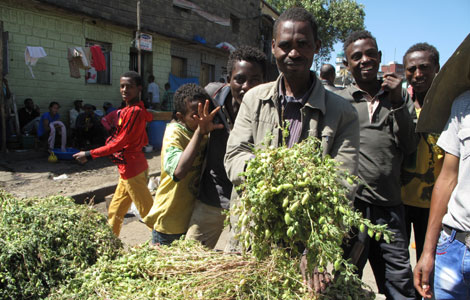
But the pregnancy of E'e is unique in that, while she isn't captive, her mate Tiantian was introduced by human intervention.
While the Tian'ezhou oxbow is intended as a haven from shipping, overfishing, pollution and dredging, human activities still disrupt the porpoises' habitats.
Farmers in surrounding villages joined together in 2011 to pump water from the reserve to irrigate their rice paddies when drought lowered the river.
"It's a Catch-22," says Cheng Xianhong, who has worked as a reserve administrator since 2008.
"Farmers need water for their fields. Porpoises need water to live."
Conflict erupted between farmers and the reserve. Finally, the local government pumped water into the oxbow from the Yangtze's main watercourse.
Still, despite water diversions and land grabs, the reserve remains a far better sanctuary than the polluted water elsewhere.
Gao Baoyan, a conservationist who has devoted herself to protecting porpoises for more than 10 years, says most of the dead specimens found in the Yangtze River starved.
Several jiangtun have quickly expired after becoming stranded on the shoals in recent years.
"The autopsies showed their stomachs were empty," Gao says.
Many porpoises' fins are infected by bacterial pollution, rendering them deformed lumps, Gao adds.
She agrees new reserves offer the only hope.
Wang Ding, the ecologist, is working with colleagues at the Wuhan Institute of Hydrobiology to find other suitable reserve locations in Hubei.
Wang Ding believes the Yangtze's economic importance makes it too difficult to entirely transform.
About 40 percent of China's GDP comes from cities along the river that also contain about 40 percent of the country's population.
"If measures aren't taken quickly, the river porpoise will share the fate of its cousin, the baiqi (white-flag) dolphin," Wang Ding says.
The last known baiqi died in Hubei's provincial capital Wuhan in 2002. The species is functionally extinct. That means individuals may exist but not enough to sustain the species.
The finless porpoise is like the baiqi dolphin in that it's atop the Yangtze's food chain. That makes it an environmental barometer.
"If the finless porpoises disappear, that signals the collapse of the river's ecosystem," Wang Ding says.
"And that's a warning bell for humankind."
Liu Kun contributed to this story.








